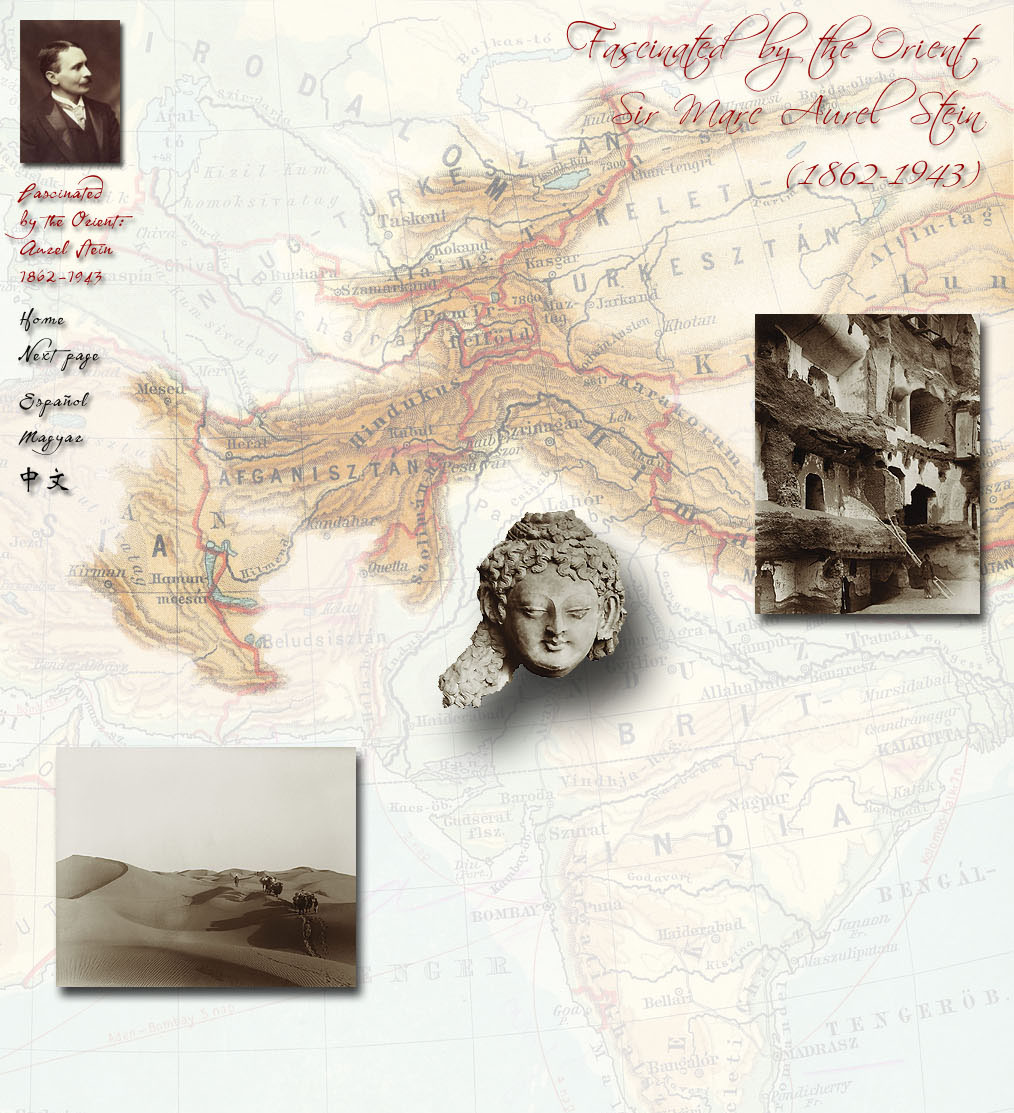
 Sir
Aurel Stein was described by Sir Denison Ross (1871-1940) as “the pride
of two nations”. From 1887 he lived in India making his knowledge
available in his adopted country, Britain, which provided the
opportunities for him to work in areas where he could make best use of
his knowledge and expertise. The geographical distance, however, did not
break him away from his native Hungary, where he spent his formative
years and developed his academic foundations. He regularly visited
Hungary, and remained in close contact with representatives of Hungarian
intellectual life. During his brief sojourns in Budapest, he lectured at
the Hungarian Academy of Sciences, of which he was a member since 1895.
Throughout his life he supported the Academy with donations, bequeathing
his printed books, part of his manuscripts, and his photographic
collection of over 7,000 items to the library of the Academy.
Sir
Aurel Stein was described by Sir Denison Ross (1871-1940) as “the pride
of two nations”. From 1887 he lived in India making his knowledge
available in his adopted country, Britain, which provided the
opportunities for him to work in areas where he could make best use of
his knowledge and expertise. The geographical distance, however, did not
break him away from his native Hungary, where he spent his formative
years and developed his academic foundations. He regularly visited
Hungary, and remained in close contact with representatives of Hungarian
intellectual life. During his brief sojourns in Budapest, he lectured at
the Hungarian Academy of Sciences, of which he was a member since 1895.
Throughout his life he supported the Academy with donations, bequeathing
his printed books, part of his manuscripts, and his photographic
collection of over 7,000 items to the library of the Academy.This exhibition introduces Sir Aurel Stein, the man and the scholar, with reproductions of photographs, maps, letters and manuscripts from the Aurel Stein Collection preserved in the Library of the Hungarian Academy of Sciences, and other Hungarian collections, supplemented by rare books and publications from the holdings of the University of Hong Kong Libraries, and the private collection of Dr Paul Kan.
